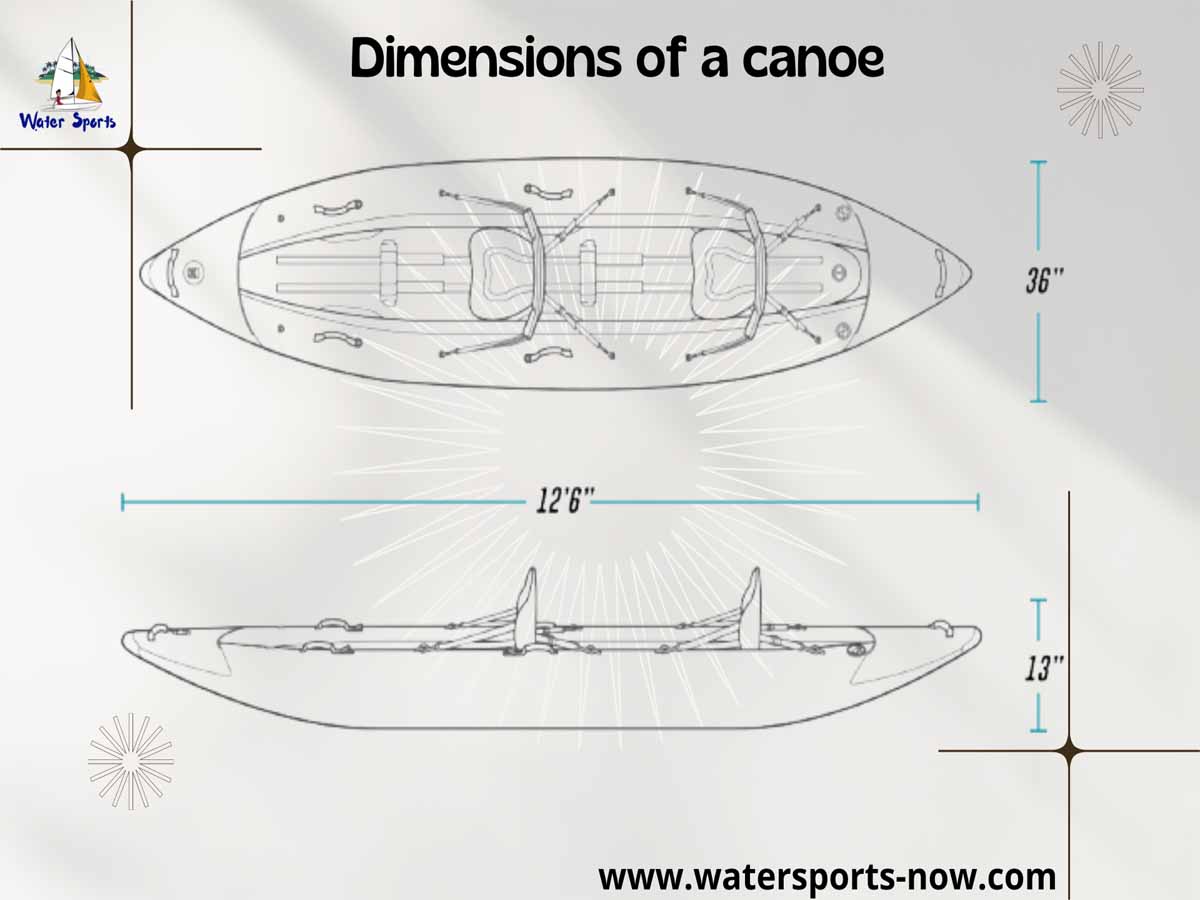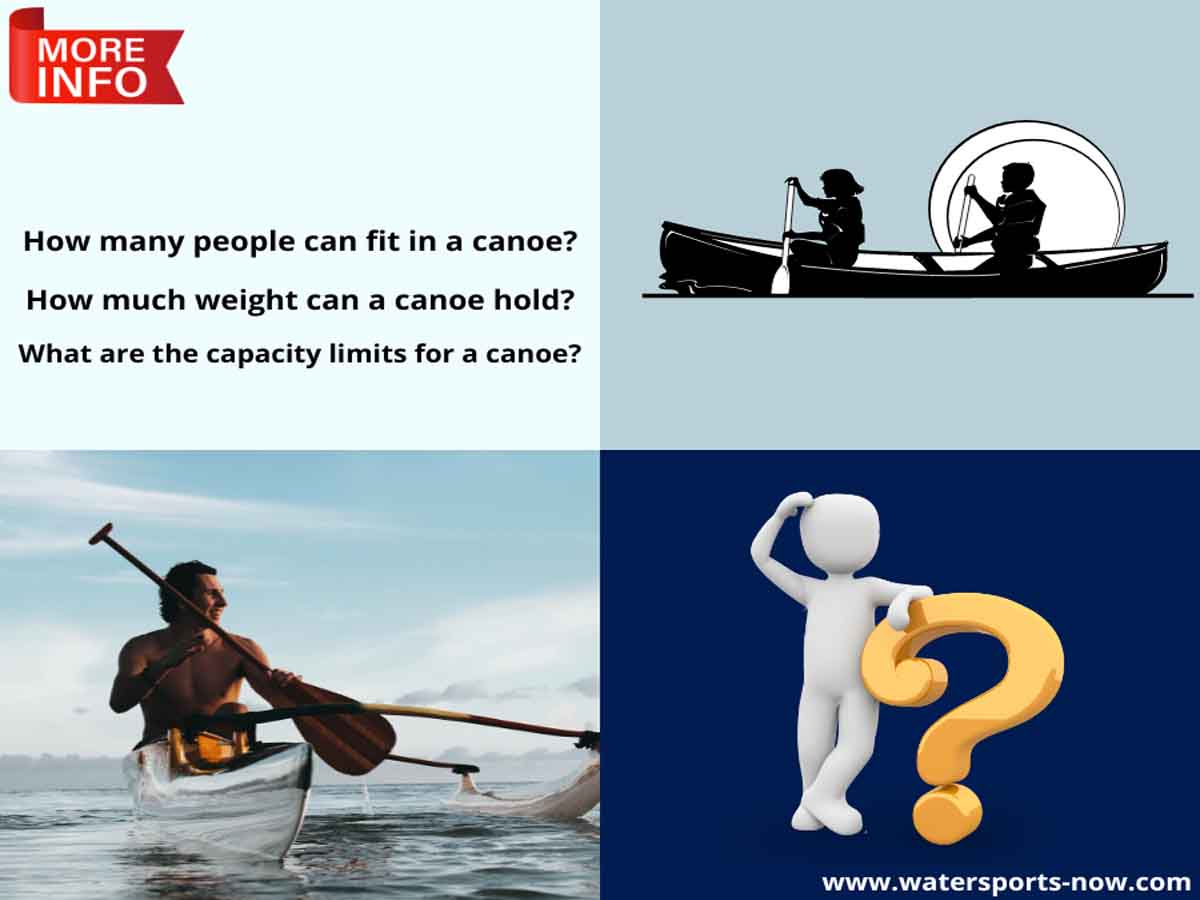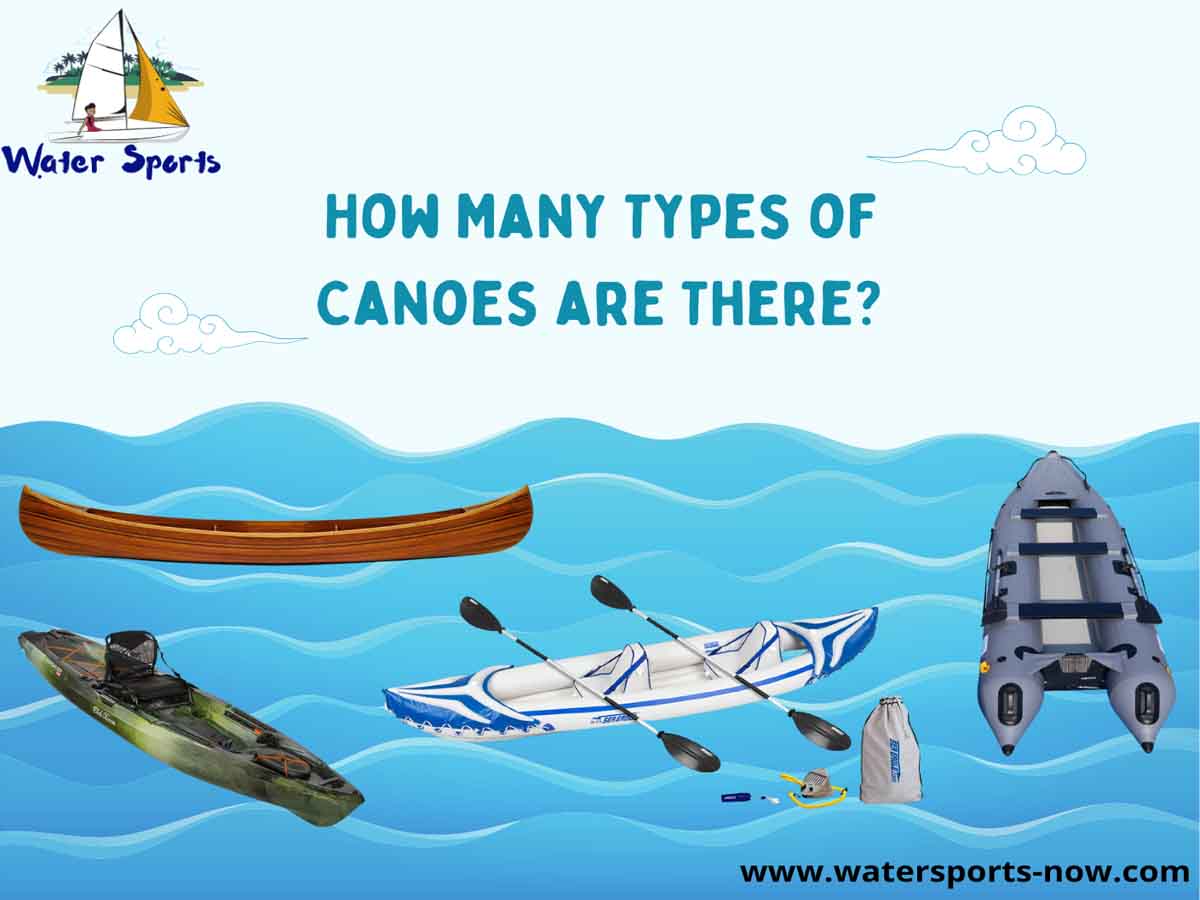Canoes come in all shapes and sizes, but how big is a canoe? That depends on the type of canoe and the number of people it’s meant to hold. For example, a solo canoe might only be 10 feet long, while a family canoe might be 20 feet long. In this blog post, we’ll explore the different types of canoes and how big they are.
How Big Is A Canoe?
A typical big canoe is about 14.5 to 17 feet in length. As we’ve already mentioned, the typical canoe length is 16 feet, which falls squarely in the center of our normal, medium-sized canoe length. The most common length for canoes is 16′, which is the standard length.
There are a variety of different canoes on the market, from shorter, kid-sized canoes to longer models designed for tandem paddling. Just remember: the more people in the canoe, the more weight it will carry and the more difficult it will be to paddle. So when in doubt, go for a smaller canoe.
Some Big Canoe: Have a Look
What to Bring on a Canoe Trip
- Suntan lotion
- Binoculars
- Eyeglasses straps
- Insect repellent
- Hat
- Life preserver
- Your canoe “repair kit”
- Sunglasses
- Fishing gear
- Two sets of worn-out sneakers—one for wet weather and the other for dry weather.
- “Water-tight” plastic bags
- Extra clothing
- Extra flotation device
- Jacket or sweater
- Camera
- “First aid kit”
See Canoe Trip Equipment
Prepare yourself thoroughly for your canoe trip.
- You must be a strong swimmer with the ability to control yourself both above and below the water.
- Prepare for the “water temperature” by dressing comfortably, and be prepared to get drenched. You can think about dressing in layers that you can remove or add as needed while kayaking.
- Put on your sunglasses and fasten the straps. These will shield your eyes from the sun’s harsh rays and any foreign objects that may come into touch with them.
- Protect your feet by wearing shoes.
- Bring distilled spirits in bottles. No matter how pure it may seem, you should never drink river water.
- Bring the essential allergy meds in your boat because it could take some time for help to come in an emergency.
- Keep in mind that paddling requires a lot of physical work, so you should speak with your doctor before beginning this sport.
- Don’t forget to bring snacks in your canoe, and store them in a waterproof container that you can fasten to the canoe. Remember that anything not secured to the canoe runs the risk of getting wet or getting misplaced.
Here are some basic canoe tips to help you choose the greatest used canoe in Florida to get you started.
1. Be aware of your goals
Get a used canoe that is specifically designed to go between shallow and quiet waterways if you intend to explore Tampa, Florida’s outdoors. Additionally, fishing and “slalom racing” call for a distinct kind of canoe. Therefore, it is crucial that you choose how you will make use of the many used canoes in Tampa, Florida features and services.
2. Consistently select the longer ones
According to experts, canoes may go through the water more quickly the longer they are. Therefore, consider purchasing a merchant canoe if you wish to travel along the Hillsborough River State Park quickly. However, bear in mind that longer canoes are generally more difficult to control, so after you have made the decision to buy a used canoe of this kind, it is ideal if you are familiar with the area.
3. Review the general characteristics
The best course of action is to carefully inspect the canoe’s general condition before making a purchase in Tampa, Florida. Keep in mind that used canoes may have spent hours in the water, which may have caused wear and tear. Always verify the tumblehome to ensure a decent purchase. The “curved sides” of the canoe are what give the fragile building components added strength.
So instead of merely renting a vehicle the next time you want to go paddling in Tampa, Florida, try to get a used canoe first and experience the gorgeous scenery. If you buy used canoes, you can have all the fun you want without spending more money.
What are the dimensions of a canoe?
A canoe is a small, lightweight boat that is propelled by a paddle.
Canoes range in size, but the most common ones are 16 to 18 feet long and about 35 inches wide. They can usually hold 2 to 4 people, depending on the size of the people and the amount of gear they are carrying.

Canoes are a great choice for trips on smaller rivers and streams because they are easy to maneuver and can go where larger boats can’t.
How many people can fit in a canoe?
It really depends on the size of the canoe and how cramped everyone feels. Most canoes comfortably seat up to three people, but if you’re looking for a little more space, some canoes can hold up to four or five passengers.
Of course, the more people in the canoe, the heavier it will be, so keep that in mind when planning your trip. And if you have a dog along for the ride, make sure they’re comfortable sitting at the bottom of the canoe – they’ll love it!

How much weight can a canoe hold?
It’s important to consider how much weight a canoe can hold before you go out and buy one. A canoe is designed to hold a certain amount of weight, and if you go over that limit it can cause the boat to sink.
For a two-person canoe, the weight limit is around 450 pounds. For a three-person canoe, the weight limit is around 600 pounds. And for a four-person canoe, the weight limit is around 700 pounds.
Keep this in mind when considering how many people you’ll be bringing with you on your next canoe trip!
What are the capacity limits for a canoe?
A canoe can usually hold anywhere from one to three people, depending on the size and style of the canoe.
If you’re looking for a canoe that can accommodate more people, there are a few different options available. Some canoes feature an extra bench that can be added in the center, while others have a larger capacity and can hold up to four or five people.
When it comes to capacity limits, it’s important to remember that you should never overload a canoe. This can lead to instability and could result in an accident. Always make sure to leave plenty of room for each person so you can all stay safe and comfortable during your voyage!
What are the recommended capacity limits for a canoe?
Not everyone knows this, but there are actually capacity limits for canoes. This is because the weight and distribution of people in a canoe can affect its stability and performance.
Generally speaking, a canoe can carry up to three people (or 500 lbs) without any problems. However, if you plan on taking a lot of gear with you, it’s best to go for a canoe that has a higher capacity limit.
If you have any questions about what capacity limit is best for your needs, don’t hesitate to contact us. We’re more than happy to help!
How Many Types of Canoes are There?
Many people are unaware of the wide variety of canoes available. Canoes are now divided into rigid and non-rigid categories. A non-rigid canoe is one that is crafted from a single piece of wood, according to artisans. A rigid canoe is constructed by welding many pieces of wood together. Each variety has distinct benefits and drawbacks.
River, recreational, whitewater, racing, and fishing canoes are the most prevalent. The materials used to make different types of canoes include aluminum, fiberglass, Kevlar, and inflatable PVC. Additionally, canoes range in seating capacity from one person to four or more.

For example, a non-rigid canoe is lightweight and easier to portage. However, a rigid canoe is stronger, more pliable, and can hold more people. In general, canoes are a type of boat that has been used for centuries for recreational and competitive purposes.
A number of paragraphs: 6 There are many different types of canoes. Some of the most popular types of canoes are the balsa wood-framed canoes, single-place racing canoes, and double-place racing canoes. Single-place racing canoes are used in competitive racing events such as the Leukemia Cup.
These canoes are lightweight and used by one person. Double-place racing canoes seat two people and are used in competitive racing events. Balsa wood-framed canoes are a type of non-rigid canoe. These canoes are lightweight and easy to build. Single-place racing canoes are often made from balsa wood. In addition, single-place racing canoes are also often made from fiberglass.
Plant species that are commonly used for making canoes include willow, holly, birch, cypress, and cedar. There are many different types of canoes. One way to classify them is by their shape. The three main shapes of canoes are the balsa wood-framed, single-place racing, and double-place racing canoes. Balsa wood-framed canoes are a type of non-rigid canoe. These canoes are lightweight and easy to build. Single-place racing canoes are often made from balsa wood. In addition, single-place racing canoes are also often made from fiberglass.
Another way to classify canoes is by their use. One way to classify them is by their use. Some canoes are used for recreational purposes. These canoes can be classified as either non-rigid or rigid. A non-rigid canoe is made from a single piece of wood and is lightweight. A rigid canoe is made from multiple pieces of wood and is stronger than a non-rigid canoe. In addition, a rigid canoe can hold more people and is better for competitive purposes.
Overall, there are many different types of canoes. Each type has its own advantages and disadvantages. In general, non-rigid canoes are lightweight and easy to build. However, they are more susceptible to damage.
Rigid canoes, on the other hand, are more durable and stronger than non-rigid canoes. Single-place racing canoes are often made from balsa wood. They are lightweight and often used for recreational purposes. In general, canoes are a type of boat that has been used for centuries for recreational and competitive purposes.
Terminate
So, How Big Is A Canoe? Well, it depends on the type of canoe and the size of the waterway. For example, a Whitewater canoe is smaller and nimbler than a freighter canoe. And, of course, a canoe designed for a river will be different than one designed for a lake. If you’re ever in doubt, just ask a local – I’ll be able to tell you the best size canoe.
This article provides some interesting facts about canoes. If you found it helpful, be sure to like it, and comment if you. Stay Safe and Stay Good, Cheers!
You May Also Like
- How to Paddle a Canoe: 10 Mistake a Beginner Can Make
- Exciting Tips on How to Start Surfing in 2022
- How Much Does a Canoe Cost? 10 Affordable Canoes That You
- 8 Best Men’s Wetsuits Reviewed: How To Choose The Right One
- Top 4 All-Inclusive Canoe Accessories On your Next Trip
- The Best Canoe Paddle Review: 8 Models To Choose From
- Best Canoeing Products | 5 Top Rated Reviews


Hello there! I simply want to offer you a huge thumbs up for the great information you have here on this post. I will be coming back to your web site for more soon.
Thank You dear